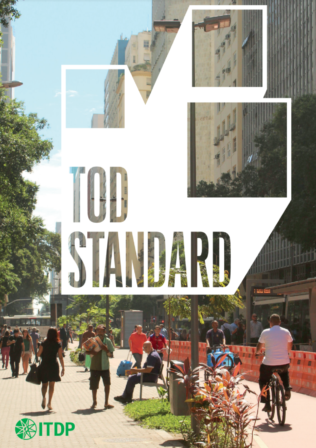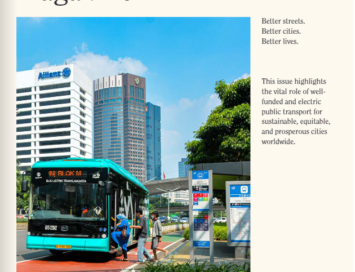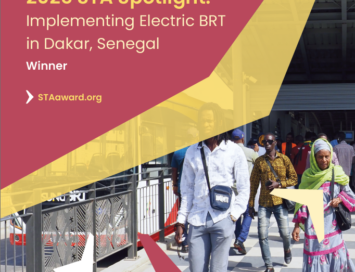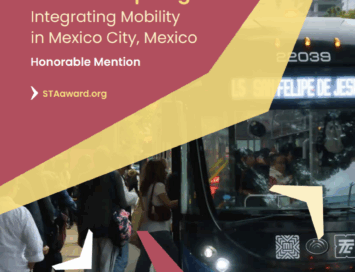TOD Standard
About
Transit-oriented development (TOD) is a critical solution to the unsustainable, car dependent, and transit-poor urban sprawl that has characterized the growth of cities around the world over the last century. It also contrasts with transit-adjacent development that fails to foster the strong walking and cycling environment needed to complement and actively support the use of public transit.
The TOD Standard 3.0 is a powerful tool to help shape and assess sustainable urban development. It focuses on maximizing the benefits of public transit and non-motorized mobility while placing the emphasis firmly back on the users: people. The Standard outlines several core principles of urban design and land use, each supported by specific performance objectives and easily measurable indicators, or metrics.
Together, they promote safe, balanced, and vibrant neighborhoods around stations; short and well-connected pedestrian and cycling networks; densities that ensure strong customer bases for local services and public transport; and minimal car traffic and parking interference.
The TOD Standard offers a definitive guide for understanding, measuring, and evaluating TOD in any city and is organized around eight core principles: Walk, Cycle, Connect, Transit, Mix, Densify, Compact, and Shift.
Together, these principles form the foundation for transit-oriented development and integrated urban places that inclusively and equitably bring people, activities, buildings, and public spaces together.
Each principle is elaborated with clear, concrete objectives and underlying metrics to further define what urban environments should look like in order to facilitate car-free lifestyles and public well-being.
By providing a way to quickly evaluate the planning and design components that are key to successful TOD, the Standard fills a critical gap in the instruments available to both technical and non-technical audiences, such as: policymakers, planners, city officials, developers, architects, engineers, civil society organizations, and the general public.
*Version 3.0 of the Standard was updated in June 2017, replacing previous Versions 1.0, 2.0, and 2.1.
Learn More
- Visit TODStandard.org →
- Continue Reading on the ITDP Blog →
- Download the “Mix Principle of TOD” Infographic →
- Watch the “TOD Standard 3.0: Building Inclusive Cities” webinar →
- Download the TOD Score Calculator Excel Sheet →
Interested in learning more about this Standard or have a press inquiry? Email us at [email protected].





